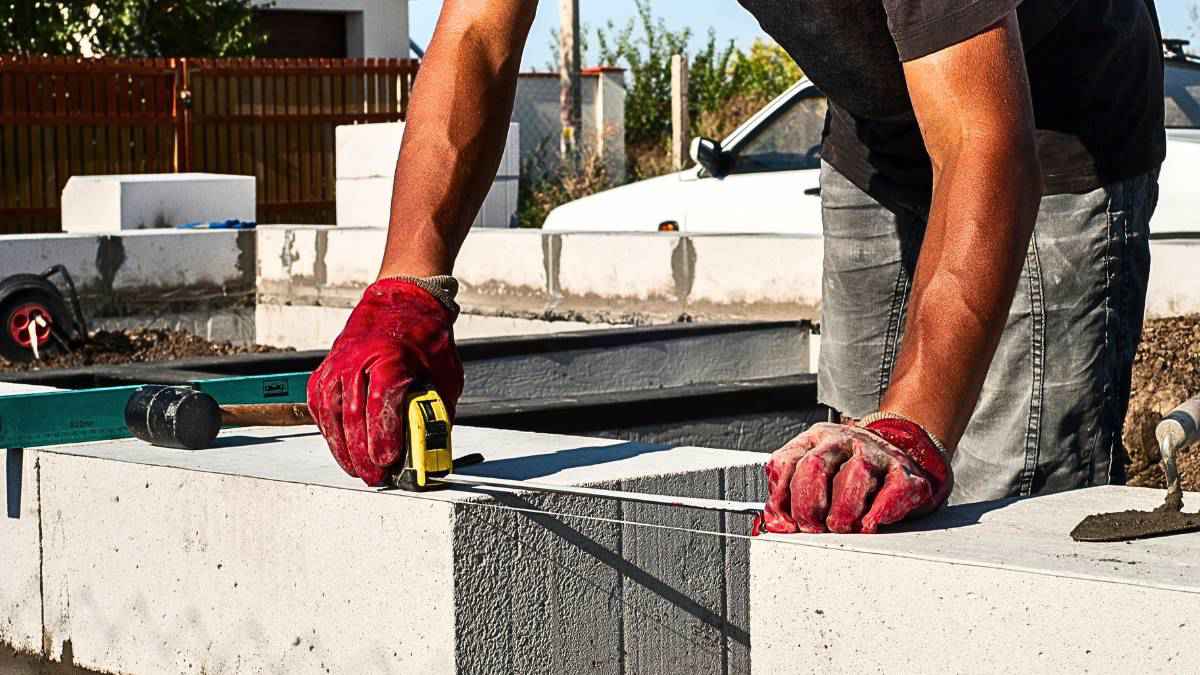Masonry Techniques: Building Better Brick and Stone Work

The Legacy of Masonry
Masonry is a testament to human ingenuity, as it has stood the test of time. The craft has continuously evolved, adapting to different cultures, technologies, and architectural styles. While masonry techniques may vary across regions and time periods, some fundamental principles remain constant:
Materials Matter
The cornerstone of masonry is the selection of suitable materials. Brick and stone are the most commonly used options. Bricks are clay-based and come in various sizes, shapes, and colours. Stone, on the other hand, offers natural beauty and durability but may be heavier and more challenging to work with. The choice of material often depends on factors such as climate, aesthetics, and budget.
The Mortar Mix
Masonry relies on mortar to bind individual units together. Traditional mortar consists of a mix of sand, cement, and water. The ratio and composition of the mortar can vary to suit specific project requirements. Modern developments have introduced various additives and mortars that cater to specific needs, such as enhanced strength or reduced water permeability.
Precision and Craftsmanship
Masons are artisans who meticulously plan and execute each project. Precision is paramount. Mortar joints must be consistent, and bricks or stones should be level and plumb. Achieving this level of precision requires skill, patience, and an acute eye for detail.
The Enduring Appeal of Masonry
Why has masonry endured for millennia, despite the advent of modern construction methods? The answer lies in its timeless qualities:
1. Durability:
Structures built using masonry can last for centuries, resisting wear and tear and the elements.
2. Aesthetics:
Brick and stone lend a classic, rustic, or elegant charm to any building, making masonry an enduring choice for architects and homeowners.
3. Sustainability:
Natural materials like brick and stone are eco-friendly, and masonry is recyclable and energy-efficient.
4. Versatility:
Masonry can adapt to any architectural style, from traditional to contemporary, offering endless design possibilities.
5. Increased Property Value:
Masonry features can significantly enhance a property’s value, making it an attractive investment.
The Path to Mastery

Achieving mastery in masonry is a lifelong journey that requires dedication, practice, and a commitment to continuous improvement.
THE ART OF MASTERY
Mastering masonry requires impeccable craftsmanship, creativity, and innovation. Whether you aspire to create breathtaking decorative elements, restore historical treasures, or push the boundaries of sustainable construction, the world of advanced masonry offers a vast landscape for exploration. With dedication, continuous learning, and a deep respect for the tradition of this ancient craft, you can become a true master of masonry, leaving your mark on the built environment for generations to come.
THE JOURNEY TO MASTERY
Masonry is more than just a trade; it’s an art form that has shaped our architectural heritage for centuries. To become a master mason is to embrace the rich history and tradition of the craft while staying adaptable to the innovations of the present and future. With a commitment to training, continuous learning, and the pursuit of excellence, you can embark on a fulfilling journey towards masonry mastery, leaving your mark on the built environment for generations to come.
Want to achieve mastery in masonry? Here are the steps to consider:
1. Apprenticeship:
Many aspiring masons begin their journey through apprenticeships. These programs typically last 3 to 4 years and combine classroom instruction with on-the-job training under the guidance of experienced masons. During this time, apprentices learn the basics of masonry, including techniques, safety, and the proper use of tools.
2. Formal Education:
Some masons choose to complement their apprenticeship with formal education in masonry or related fields. This can include vocational schools, community colleges, or specialised masonry training programs. These educational opportunities provide a deeper understanding of masonry theory and practice.
3. Certification:
Obtaining masonry certification can demonstrate your expertise to potential employers and clients. Several organisations offer certification programs that test your knowledge and skills in masonry. Earning certifications can boost your credibility and open up new career opportunities.
4. Continuing Education:
Masonry is an ever-evolving field, with new materials, techniques, and technologies emerging regularly. Staying updated through workshops, seminars, and industry conferences is essential for masons who want to remain at the forefront of their craft.
5. Mentorship and Collaboration:
Learning from experienced masons and collaborating with peers can accelerate your growth as a mason. Seasoned masons can offer valuable insights, share their expertise, and guide you through challenging projects.
6. Portfolio Building:
As you gain experience, document your work in a portfolio. A well-organised portfolio showcasing your projects can be a powerful tool when seeking employment or clients for your masonry services.
Tools of the Trade

Masonry is a hands-on craft that relies on a set of specialised tools to shape, cut, and position bricks or stones.
THE BASIC ESSENTIAL TOOLS
Here are some essential tools commonly used by masons:
1. Trowel:
A flat, pointed tool used to spread and shape mortar.
2. Mason’s Hammer:
Used for cutting and shaping bricks or stone.
3. Chisels:
Essential for detailed cutting and shaping of stone or bricks.
4. Level:
Ensures that the work is perfectly horizontal or vertical.
5. Square:
A right-angle guide for precision.
6. String Line:
Helps maintain straight and even courses of brick or stone.
7. Jointer:
Used to create a consistent finish on mortar joints.
8. Masonry Saw:
Electric or manual saws for cutting bricks or stones.
9. Mixer:
For blending mortar or concrete.
10. Safety Gear:
Masonry can be physically demanding and potentially hazardous, so protective gear like gloves, goggles, and dust masks are essential.
Explore
- To see Vermin Proofing for your home or shed go here
- To see Windows and Sliding doors for your home or shed go here
- To find Insulation for your home or shed go here
- To find steel products for your home or shed project go here
- Discover steel watertanks for your home or shed go here
- Explore mezzanine floors for the home or shed here
ADVANCED TOOLS AND TECHNIQUES
As you advance in masonry, you’ll encounter specialised tools and techniques that enable you to take your skills to the next level:
1. Computer-Aided Design (CAD):
CAD software allows masons to create intricate designs and blueprints, enhancing precision and enabling the visualisation of complex projects before construction begins.
2. High-Performance Mortars:
Advanced mortars may incorporate additives like polymers or pozzolans to enhance durability and performance.
3. Cutting-Edge Cutting Tools:
High-powered masonry saws and diamond-tipped blades are essential for precision cutting of stone and brick.
4. 3D Scanning and Printing:
These technologies can aid in the replication of intricate historical masonry elements for restoration projects.
Masonry Techniques Commonly Used In Construction
Here are some examples of masonry techniques commonly used in construction:
A. BRICKLAYING:
Running Bond: This is the most common bricklaying pattern, where each row of bricks overlaps the one below it by half. It creates a strong and stable wall.
Flemish Bond: In this decorative technique, headers (bricks with the short end facing out) alternate with stretchers (bricks with the long end facing out) in a repeating pattern.
Stack Bond: In this modern style, all bricks are stacked directly on top of one another, creating a sleek and uniform appearance.
B. STONE MASONRY:
Dry Stone Masonry: In this ancient technique, stones are stacked without mortar. The stones are carefully selected and placed to interlock, creating stable structures like walls and bridges.
Ashlar Masonry: This involves cutting and shaping stones into precise, square shapes for a uniform and polished appearance. It’s commonly used in historic and high-end construction.
Rubble Masonry: Irregularly shaped stones are used, often with mortar, to create a rustic and textured look. It’s commonly seen in older buildings and retaining walls.
C. POINTING:
Tuck Pointing: This technique involves filling in the mortar joints between bricks or stones with a contrasting coloured mortar to create the illusion of fine joints. It’s often used for decorative purposes.
Flush Pointing: Here, the mortar is neatly finished flush with the brick or stone surface, creating a smooth and seamless appearance.
Weathered Pointing: The mortar joints are sloped or bevelled to shed water away from the wall, enhancing weather resistance.
D. ARCH CONSTRUCTION:
Segmental Arch: A curved arch made from multiple bricks or stones cut to wedge shapes to form the curve.
Gothic Arch: A pointed arch that is often used for its aesthetic appeal and can be found in Gothic-style architecture.
E. VENEER INSTALLATION:
Thin bricks or stones are adhered to a wall’s surface as a decorative covering. This technique is commonly used to enhance the appearance of buildings, especially in modern construction.
F. RETAINING WALL CONSTRUCTION:
Gravity Walls: These rely on the weight and mass of the wall material to resist the pressure of the soil behind them.
Reinforced Retaining Walls: These walls use additional materials like steel reinforcement or geogrids to increase their stability.
G. CASTING AND SCULPTING:
In some cases, masons may cast concrete or mortar into moulds to create decorative elements like balusters, cornices, or ornate sculptures.
H. INLAYS AND MOSAICS:
Intricate designs can be created by embedding contrasting bricks or stones within a larger masonry surface, producing eye-catching patterns or images.
I. RESTORATION TECHNIQUES:
Masons skilled in restoration may use techniques like repointing, stone replacement, or mortar analysis to preserve and repair historic masonry structures.
J. FIREPLACE CONSTRUCTION:
Building fireplaces requires precise techniques to ensure safety and functionality. Techniques include laying firebrick, creating a firebox, and constructing chimneys.
Pushing the Boundaries of Innovation in Masonry
Masonry, despite its ancient roots, continues to evolve through innovation. Here are some ways advanced masons are pushing the boundaries:
1. Energy-Efficient Masonry:
Advanced masonry techniques can incorporate insulation materials to improve energy efficiency, making masonry structures environmentally friendly.
2. Seismic Resistance:
In regions prone to earthquakes, masons are developing techniques to enhance the seismic resistance of masonry structures.
3. Sustainable Materials:
Exploring alternative materials such as rammed earth, adobe, or even sustainable concrete mixtures can lead to environmentally responsible masonry.
4. Interactive Masonry:
Advancements in materials science have led to the development of interactive masonry, where bricks or stones incorporate technology, such as LED lighting or sensors, for innovative architectural designs.
5. 3D Printing in Masonry:
Some masons are exploring the use of 3D printing technology to create intricate and customised masonry elements. This technology allows for the precise and efficient construction of complex designs, reducing waste and construction time.
6. Self-Healing Masonry:
Researchers are developing self-healing masonry materials that can repair cracks and damage autonomously. These materials have the potential to increase the longevity and durability of masonry structures.
7. Nanotechnology in Masonry:
Nanomaterials are being incorporated into masonry to enhance properties like strength, insulation, and resistance to moisture and pollutants. This cutting-edge technology can lead to more resilient and high-performance masonry.
8. Solar Masonry:
Innovative masons are integrating photovoltaic cells into bricks or stones to create solar masonry. These energy-efficient structures can generate electricity from the sun while maintaining a traditional masonry appearance.
9. Robotic Bricklaying:
Automation and robotics are being used in masonry to increase efficiency and precision. Robotic bricklaying machines can lay bricks quickly and accurately, reducing labour costs and construction time.
10. Bio-Masonry:
Bio-masonry involves the integration of living organisms, such as mosses, algae, or even small plants, into the masonry structure. These living elements not only add an aesthetic and eco-friendly dimension to buildings but also contribute to improved air quality and insulation, showcasing a unique blend of nature and architecture.
These advancements demonstrate how masonry, a time-honoured craft, is embracing modern technology and sustainable practices to meet the evolving demands of the construction industry and address contemporary challenges such as energy efficiency, sustainability, and resilience.






























